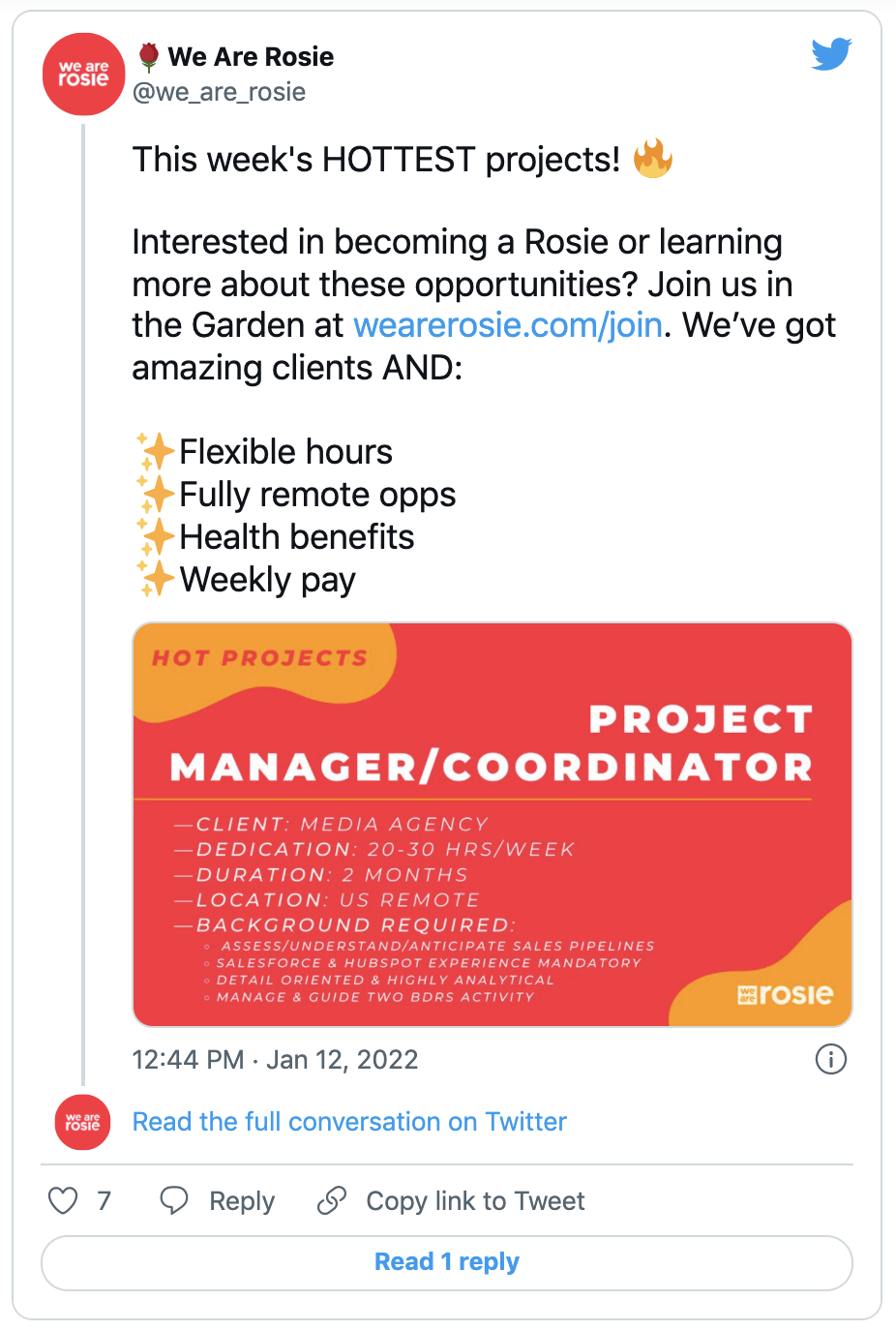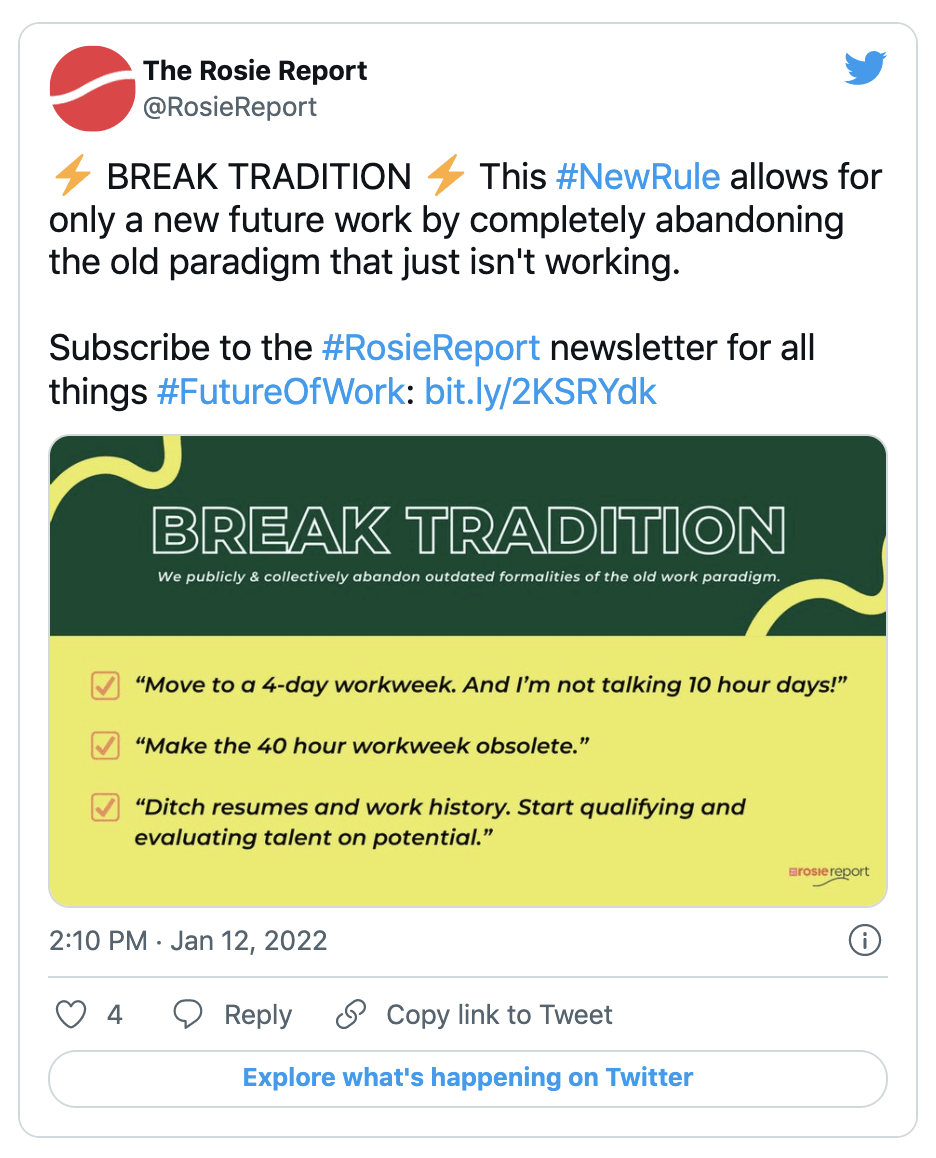“Even if I decide I don’t want to extend my contract, there will be something else in the pipeline for me,” she said. “It feels nice that you have the power yourself to pick and choose.”
To retain contractors or freelancers for as long as possible, agencies can maintain communication with their talent and offer that they fill new roles when their positions start to feel stale.
Onboard freelancers like full-time employees
Investing in freelance or temporary talent can lead agencies to find qualified, full-time employees, and agencies need to ensure incoming freelancers feel at home.
WorkReduce, a company that supplies its full-time employees to media agencies, says its agency clients usually onboard temporary employees just like they would a full-time employee. WorkReduce’s staff has access to salary and benefits even if they’re between contracts, with working hours capped at 40 each week and guaranteed overtime.
“About half of our clients are shipping laptops because they want to have the same IT security,” said CEO Brian Dolan.
As temporary talent becomes more embedded, agencies are committing to building lasting relationships with temporary employees. Contracts are longer than they used to be, according to Michael Haight, WorkReduce’s svp of client success.
“The real driver for that is the talent gap, and the fact that when agencies find somebody, they are plugging them in and they are doing it for longer,” he said.
This results in many eventually joining agencies full time. The media staffing company loses approximately 5% to 10% of its employees each year to agencies that extend those employees full-time job offers.
WorkReduce offers a flexible model for both agencies and talent, allowing both sides to test the waters before committing to employment.
“Contractually, that is part of our value add to our agency clients,” said Dolan. “They can just pick off the best people.”
According to Phelps, the nature of the “egalitarian culture” and unconventional agency style of 160over90 has allowed the shop to treat its freelancers no differently than full-time employees.
“We’re continually a collection of different people with very different skills, and a freelancer is welcomed into that within moments,” he said. “We’ve had to unpick the clunkiness of single office, single-offering agencies by definition of our breadth.”
Know what you need
Getting the best talent is a challenge for agencies—in the last three months, WorkReduce has seen instances of sister agencies at holding companies vying for the same talent. The company is allowing some of its original clients to have a “first look” at talent—giving a Dentsu agency 24 hours to make a decision on who it wants to onboard before passing the remaining options to a Dentsu sister agency. One agency receives priority over the other because it has been a client for longer, or it has paid a premium for the opportunity.
In such a fast-moving environment, some agencies also have a hard time articulating to hiring partners what kind of talent they need for any given brief. One COO at a North American holding company is trying to push their agency to articulate its needs more clearly to outside partners like WorkReduce, Haight told Adweek.
“They might tell us something and it’s a game of telephone from the hiring manager, and we get the wrong remit,” he said, noting that some hiring managers are more open to training talent than others, but that’s not always reflected in a brief. “It’s the nuance of what any given team or manager is able to accommodate that’s really hard to suss out and translate back to someone like us.”
Make a long-term plan
With contract work becoming more pervasive across the industry, and in some cases resulting in assignments up to a year in length, agencies can find themselves partnering closely with freelance or temporary employees. This results in the need for agencies to take a more thoughtful approach to how they hire freelancers in the long term.
The future of the agency model, according to John Hegarty, founder of the creative agency BBH, could mirror that of a club. The agency might have a core group of people running it, and those people will collaborate with other affiliated members that come and go.
“In doing that, in developing that crossbreed, almost of having the best of both worlds is, I think, the way of the future,” he said.
This model could require agencies to invest in tools that simplify the process of finding freelancers, and it will require agencies to consider diversity and inclusion when hiring them.
One solution is automated talent agency Genie, of which Hegarty is chairman.
It scouts freelancers to add to its invite-only talent pool. Clients submit briefs to Genie and are speedily matched by AI with freelancers who are both available for work and interested in the brief. The company helps agencies automate the scouting process and become more intentional about the freelance talent they hire.
The platform’s live data includes diversity, ethnicity, age, gender, and school backgrounds, and its algorithm is designed to spot inequities.
“We can see pay gaps emerging and find ways to act on a pay gap crime about to be committed by a client without knowing it,” said Genie co-founder Nick Grime.
Accommodate their work style
Chase Zreet, a freelance copywriter at The Martin Agency, turned to freelance because he wanted to limit the amount of side work he was doing and just jump straight into the creative. Zreet thrives under pressure, and he was looking for an agency that would let him come in and “put out fires,” which he says is exactly what Martin has done.
“They call whenever they need something done now, and I really enjoy the pressure and the utility of that,” he said. “I told Martin that’s what I wanted going in and that’s how they’ve used me. I think it’s worked out well for everybody.”
When Wiedner decided to quit her full-time agency job to join We Are Rosie, she was in need of work-life balance. Her contract at Essence has afforded her the ability to unplug and spend more time doing what she enjoys. At her old job, Wiedner felt like she couldn’t go anywhere without carrying her phone and laptop.
At 160over90, Phelps views the influx of freelance talent as an opportunity for agencies to reassess their company culture and make sure they are offering the best possible work environment for employees.
“The more people go freelance, the more it behooves companies to make it attractive to work for them,” he said. “We’re smart enough to make freelancing with us a joy and successful. It behooves us, but it also makes people want to stick around.”


